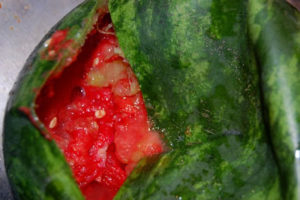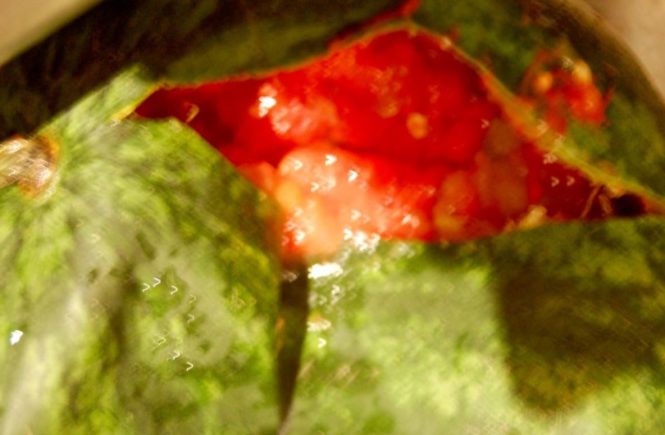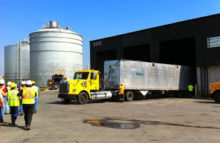On Sunday, I picked up a little seedless watermelon from my local No Frills and gave it what I thought was an authoritative tap to test for ripeness. Little did I know that what I purchased, after the thunk, was not a watermelon. It was a festering cesspool.
Until late last evening, without warning, it exploded.
What happened was this. I’d popped into the kitchen after a long day, hoping to score a cup of hot milk (we live large, chez nous). I didn’t get far before discovering that the kitchen floor had turned into a river. What’s more, this river was fed by a waterfall cascading down the cabinets, and at the top of the waterfall was a vast lake. All over the counter.
From whence springs this mighty waterway?, I asked no one in particular.
 Soon, my own eyes told me. Both river and lake – along with a lot of pre-digested squishy red flesh and what, with apologies, can only be described as yellow pus – had sprung from my watermelon.
Soon, my own eyes told me. Both river and lake – along with a lot of pre-digested squishy red flesh and what, with apologies, can only be described as yellow pus – had sprung from my watermelon.
The shell had turned to a fashion accessory for Leatherface. When I relocated it to the sink to give me room to drain the lake, I could see its insides bubbling like a cauldron. And when I tipped the whole sorry mess over, there was more water left to gush out. Yes, more. And still more.
Yet who would have thought the old melon to have had so much water in him? (Lady MacMelon, Act 5, scene 1)
I’ve never thought deeply about how much water is in a watermelon. Let me say this about that: it is plentiful, abundant, copious. There is a sea of watermeloniousness inside. (According to Wikipedia, watermelons are 92% water by weight.) And when it ferments, it is pretty icky. It resists capture. Two rinses of the floor, and it is still tacky.
I guess we won’t be having that for dessert.




